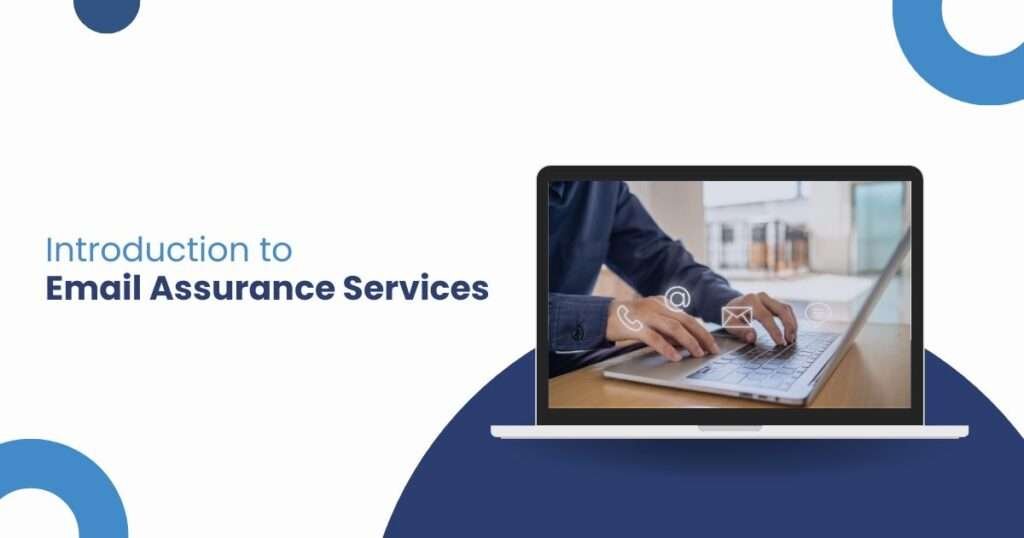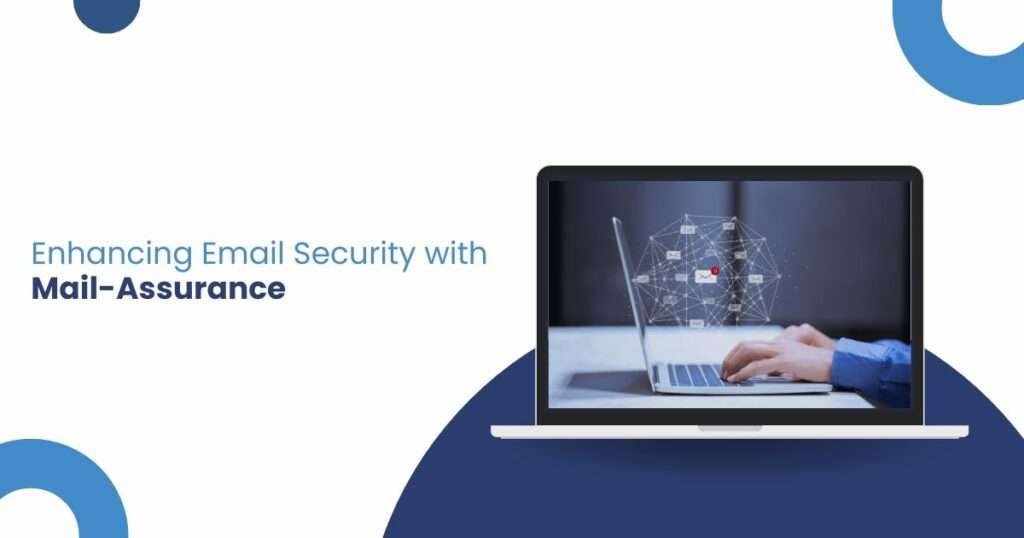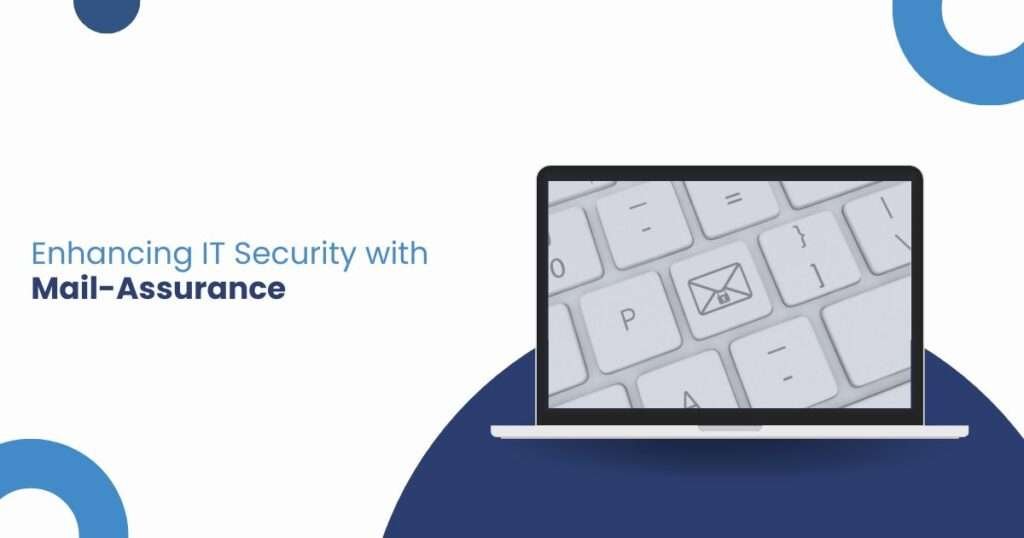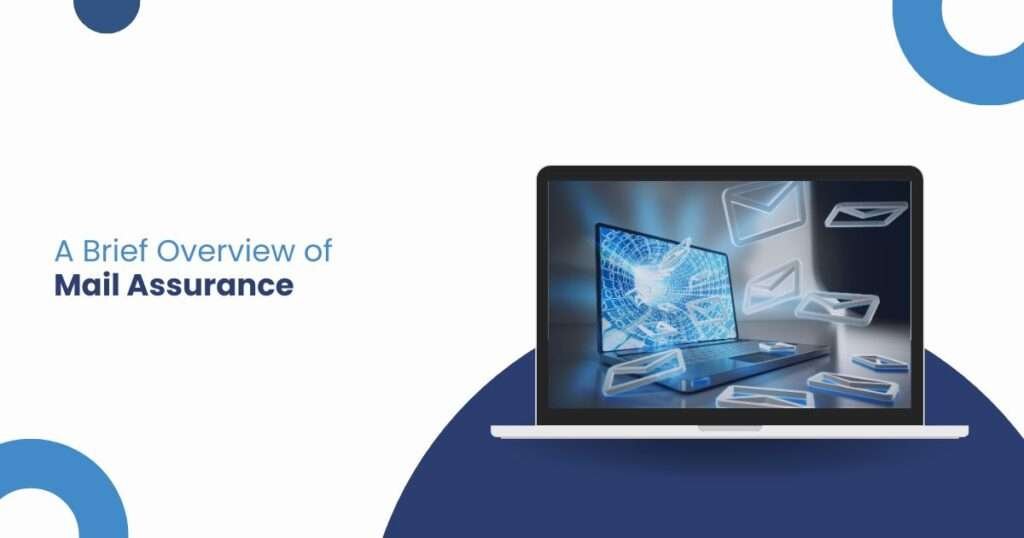Introduction to Email Assurance Services

In today’s digital age, email remains one of the primaries means of communication for businesses and individuals alike. However, with its widespread use comes a significant risk of cyber threats, including phishing, malware, and data breaches. This is where Mail Assurance Services come into play. Mail assurance refers to a suite of email security services designed to protect email communications from various threats, ensuring that sensitive information is transmitted securely and efficiently. Understanding IT Managed Services IT Managed Services involve outsourcing IT operations to a third-party provider, which takes on the responsibility for managing, monitoring, and maintaining an organization’s IT infrastructure. This includes everything from network management to data security and, importantly, email security. Managed services providers (MSPs) offer specialized expertise and resources, enabling businesses to focus on their core operations without worrying about the complexities of IT management. Importance of Email Security Email security is crucial for protecting sensitive information and maintaining the integrity of communication channels. With the rise of sophisticated cyber-attacks, businesses must implement robust email security measures to safeguard against data breaches, identity theft, and other malicious activities. Email security services encompass a range of solutions, including email encryption, secure email communication protocols, and email threat protection. Components of Mail Assurance Mail Assurance comprises several key components, each designed to address specific aspects of email security. These components include email encryption, which ensures that email content is only accessible to intended recipients. Popular solutions include encrypted email Outlook add-ins and other email encryption tools. Email security software provides comprehensive protection against spam, phishing, and malware. This software often includes features like spam filtering, malware detection, and data loss prevention. Email threat protection focuses on identifying and mitigating email-based threats, such as phishing attacks and ransomware. Advanced threat protection solutions use machine learning and artificial intelligence to detect and neutralize threats in real-time. Secure email communication involves implementing protocols and practices that ensure the confidentiality, integrity, and availability of email communications. Threats Addressed by Mail Assurance Mail Assurance Services are designed to tackle a wide array of email threats, including phishing attacks, which are fraudulent attempts to obtain sensitive information by disguising as a trustworthy entity. Malware and ransomware, which are malicious software designed to disrupt, damage, or gain unauthorized access to computer systems, are also addressed. Additionally, spam, unsolicited and often malicious emails that clog inboxes and pose security risks, is another target. Business Email Compromise (BEC), a sophisticated scam targeting businesses that work with foreign suppliers or regularly perform wire transfer payments, is mitigated. Lastly, data breaches, which involve unauthorized access to confidential data transmitted via email, are prevented. Benefits of Mail Assurance Services Implementing Mail Assurance Services offers numerous benefits to businesses. Enhanced security is a primary benefit, providing comprehensive protection against a wide range of email threats. Regulatory compliance is another advantage, as these services help businesses adhere to industry regulations and standards for data protection and email security. Cost savings result from reducing the financial impact of cyber-attacks and data breaches. Improved productivity is achieved by minimizing downtime and disruptions caused by email threats, allowing employees to focus on their tasks. Finally, peace of mind is provided, as businesses can operate with confidence, knowing their email communications are secure. Features of IT Managed Mail Services IT Managed Mail Services provide a range of features designed to enhance email security and streamline management processes. Continuous surveillance of email systems to detect and respond to threats in real-time is a key feature. Automated updates and patch management ensure that email security software is always up-to-date with the latest protections. User training and awareness programs educate employees on best practices for email security and how to recognize potential threats. Scalable solutions offer flexible services that can grow with the needs of the business. Customizable policies allow for tailored security measures that meet the specific requirements of the organization. Implementation and Integration Integrating Mail Assurance Services into an existing IT infrastructure requires careful planning and execution. The process typically involves several steps. An assessment is conducted to evaluate the current email security posture and identify areas for improvement. The selection phase involves choosing the right email security services and solutions that align with business needs. Deployment follows, where the selected solutions, which may include email encryption tools, security software, and threat protection systems, are implemented. Integration ensures seamless incorporation with existing IT systems and workflows. Testing and validation are then conducted to ensure the effectiveness of the implemented solutions. Finally, comprehensive training is provided for employees to ensure they understand and can utilize the new security measures effectively. Case Studies: Successful Implementations To illustrate the effectiveness of Mail Assurance Services, consider the following case studies. In the first case, a mid-sized financial services firm faced frequent phishing attacks and data breaches. By implementing a comprehensive Mail Assurance Service that included email encryption and advanced threat protection, the firm reduced phishing incidents by 90% and prevented several potential data breaches. In the second case, a healthcare provider needed to comply with strict regulatory requirements for patient data protection. The implementation of encrypted email Outlook solutions and secure email communication protocols helped the provider achieve compliance and significantly enhance data security. Compliance and Regulatory Considerations Mail Assurance Services play a critical role in helping businesses comply with various regulatory frameworks. The General Data Protection Regulation (GDPR) requires stringent measures for protecting personal data, including secure email communication. The Health Insurance Portability and Accountability Act (HIPAA) mandates the protection of sensitive patient information, including through secure email practices. The Sarbanes-Oxley Act (SOX) imposes requirements on financial reporting and data security for publicly traded companies. Future Trends in Mail Assurance The landscape of email security is continually evolving, with new threats and technologies emerging regularly. Future trends in Mail Assurance may include enhanced threat detection and response capabilities through artificial intelligence and machine learning. Blockchain technology could provide tamper-proof email communication and authentication. Zero Trust security models will ensure that all email communications are verified and authenticated, regardless of
Enhancing Email Security with Mail-Assurance:

In today’s digital age, email has become an indispensable tool for communication in both personal and professional spheres. However, with the increasing reliance on email comes the heightened risk of cyber threats and attacks. This is where email security steps in – a robust solution designed to enhance Mail Assurance and safeguard sensitive information from malicious actors. Mail-Assurance: Enhancing Email Security Mail-Assurance is a cutting-edge email security service that offers comprehensive protection against a wide range of email security. From phishing attacks to malware infections, Mail-Assurance employs advanced security measures to keep your email communications secure and confidential. Understanding the Importance of Email Security in IT Management Email security is paramount in IT management, as email remains one of the primary vectors for cyber-attacks. Without adequate protection, organizations are vulnerable to data breaches, financial losses, and damage to their reputation. By implementing Mail-Assurance, IT managers can mitigate these risks and ensure the integrity and confidentiality of their email communications. Implementing Mail-Assurance: Key Components and Features Mail-Assurance encompasses a suite of key components and features designed to provide comprehensive email security. These include: Advanced threat detection: Mail-Assurance employs sophisticated algorithms to identify and neutralize threats in real-time, including phishing attempts, malware, and spam. Secure email gateways: By routing all incoming and outgoing email through secure gateways, Mail-Assurance ensures that only legitimate and safe messages reach their intended recipients. Email encryption: With built-in encryption capabilities, Mail-Assurance encrypts sensitive information to prevent unauthorized access and ensure confidentiality. Data loss prevention (DLP): Mail-Assurance helps organizations prevent data breaches by monitoring and controlling the transmission of sensitive data via email. Threat Landscape: Identifying Risks to Email Communication The threat landscape for email communication is constantly evolving, with cybercriminals employing increasingly sophisticated tactics to bypass traditional security measures. Common threats include: Phishing attacks: Cybercriminals impersonate legitimate entities to trick users into divulging sensitive information such as login credentials or financial data. Malware infections: Malicious software such as ransomware or trojans can infiltrate systems via email attachments or links, causing significant damage to data and systems. Spam and junk mail: Unsolicited emails not only clutter inboxes but can also serve as vehicles for malware distribution or phishing attempts. By understanding the risks posed by these threats, organizations can better appreciate the importance of implementing robust email security measures such as Mail-Assurance. Mail-Assurance Solutions: Choosing the Right IT Managed Service Provider When selecting an IT managed service provider for Mail-Assurance, it’s essential to consider factors such as: Reputation and experience: Choose a provider with a proven track record of delivering reliable and effective email security solutions. Customization options: Look for a provider that offers flexible solutions tailored to your organization’s specific needs and requirements. Scalability: Ensure that the provider can accommodate your organization’s growth and evolving security needs over time. Support and maintenance: Opt for a provider that offers round-the-clock support and regular updates to ensure optimal performance and protection. By partnering with the right IT managed service provider, organizations can maximize the benefits of Mail-Assurance and enhance their email security posture. Secure Email Gateways: Safeguarding Against Malicious Attacks Secure email gateways play a crucial role in protecting organizations against malicious attacks by filtering incoming and outgoing email traffic. By analyzing email content and attachments in real-time, secure email gateways can identify and block potential threats before they reach users’ inboxes. With Mail-Assurance, organizations can leverage secure email gateways to minimize the risk of phishing attacks, malware infections, and other email-based threats. Advanced Threat Protection: Detecting and Neutralizing Email Threats Mail-Assurance utilizes advanced threat protection mechanisms to detect and neutralize email threats in real-time. By leveraging machine learning algorithms and behavioral analytics, Mail-Assurance can identify suspicious patterns and anomalies indicative of malicious activity. This proactive approach allows organizations to stay one step ahead of cybercriminals and protect their email infrastructure from emerging threats. Email Encryption: Protecting Sensitive Information in Transit Email encryption is a critical component of email security, particularly for organizations that handle sensitive or confidential information. With Mail-Assurance, organizations can encrypt email messages and attachments to prevent unauthorized access and ensure data confidentiality. By encrypting sensitive information in transit, organizations can mitigate the risk of data breaches and safeguard their reputation. Data Loss Prevention (DLP): Mitigating Risks of Data Breaches Data loss prevention (DLP) is essential for organizations seeking to protect sensitive data from unauthorized access or exfiltration. With Mail-Assurance, organizations can implement DLP policies to monitor and control the transmission of sensitive data via email. By identifying and blocking unauthorized attempts to send sensitive information, Mail-Confirmation helps organizations mitigate the risk of data breaches and regulatory compliance violations. Regulatory Compliance: Ensuring Email Security Standards Compliance with regulatory requirements is a top priority for organizations across industries, particularly those handling sensitive or regulated data. With Mail-Confirmation, organizations can ensure compliance with email security standards such as GDPR, HIPAA, and PCI DSS. By implementing robust security measures and controls, organizations can demonstrate their commitment to protecting sensitive information and avoiding costly penalties for non-compliance. Incident Response and Recovery: Strategies for Handling Email Security Breaches Despite best efforts to prevent email security breaches, organizations must be prepared to respond swiftly and effectively in the event of an incident. With Mail-Assurance, organizations can implement incident response and recovery strategies to minimize the impact of security breaches and restore normal operations as quickly as possible. By establishing clear protocols and procedures for incident detection, containment, and remediation, organizations can mitigate the damage caused by email security breaches and maintain customer trust and confidence. User Training and Awareness: Educating Employees on Email Security Best Practices User training and awareness are critical components of effective email security strategies. With Mail-Assurance, organizations can educate employees on email security best practices and empower them to recognize and report potential threats. By providing regular training sessions and awareness campaigns, organizations can foster a culture of security awareness and vigilance among employees, reducing the risk of successful phishing attacks and other email-based threats. Integration with IT Infrastructure: Seamless Implementation of Mail-Assurance Integration with existing IT
Enhancing IT Security with Mail-Assurance:

In the realm of IT management services, ensuring robust email security is paramount. With the ever-evolving landscape of email threat protection, organizations face unprecedented challenges in safeguarding their email communications. This is where Mail-Assurance emerges as a game-changer. In this comprehensive guide, we delve into the significance of Mail-Assurance and its multifaceted role in fortifying email security within IT managed services. Introduction to Mail-Assurance: Understanding the Importance in IT Management Services Mail-Assurance stands at the forefront of email security solutions, providing a holistic approach to safeguarding sensitive information exchanged via email channels. As organizations increasingly rely on email communication for business operations, the need for robust email security has never been more pressing. Mail-Assurance addresses this need by offering a suite of advanced features designed to mitigate risks associated with email-based threats. Key Features and Benefits of Mail-Assurance in IT Managed Services Mail-Assurance encompasses a plethora of features tailored to meet the diverse needs of IT managed services. From real-time threat detection to comprehensive email encryption, its key features include: – Advanced threat detection algorithms – Email content filtering and spam protection – Seamless integration with existing email platforms – User-friendly interface for easy deployment and management The benefits of Mail-Assurance extend beyond mere security enhancements. By mitigating the risks of email-based threats, organizations can experience: – Improved operational efficiency – Enhanced regulatory compliance – Increased customer trust and confidence Securing Email Communication: How Mail-Assurance Enhances IT Security Email communication forms the backbone of modern business operations. However, it also represents a prime target for cybercriminals seeking to exploit vulnerabilities. Mail-Assurance employs cutting-edge encryption techniques to secure email communication end-to-end. By encrypting both the content and attachments of outgoing emails, it ensures that sensitive information remains inaccessible to unauthorized parties. Email Filtering and Spam Protection: Leveraging Mail-Assurance for Enhanced Efficiency The proliferation of spam emails poses a significant threat to organizational productivity and security. Mail-Assurance tackles this challenge head-on with its robust email filtering and spam protection capabilities. By automatically identifying and quarantining suspicious emails, it minimizes the risk of users falling victim to phishing attacks or malware infections. Data Loss Prevention Strategies with Mail-Assurance in IT Managed Services Data loss can have severe repercussions for organizations, ranging from financial losses to reputational damage. Mail-Assurance offers comprehensive data loss prevention (DLP) strategies to mitigate these risks. By monitoring outbound email traffic and enforcing predefined policies, it prevents the unauthorized transmission of sensitive data, such as intellectual property or personally identifiable information. Compliance and Regulatory Requirements: Addressing Them with Mail-Assurance Solutions In today’s regulatory landscape, compliance with data protection and privacy regulations is non-negotiable. Mail-Assurance assists organizations in meeting their compliance obligations by providing robust security measures aligned with industry standards and regulations. Whether it’s GDPR, HIPAA, or PCI-DSS, Mail-Assurance offers tailored solutions to ensure adherence to regulatory requirements. Disaster Recovery and Continuity Planning: The Role of Mail-Assurance in IT Management Disruptions to email services can significantly impact business continuity and productivity. Mail-Assurance plays a vital role in disaster recovery and continuity planning by providing seamless failover capabilities and redundant infrastructure. In the event of an email server outage or data breach, organizations can rely on Mail-Assurance to maintain uninterrupted email communication and data access. Advanced Threat Protection: Safeguarding Against Email-Based Cyber Attacks Cyber threats are becoming increasingly sophisticated, making traditional security measures inadequate. Mail-Assurance leverages advanced threat protection mechanisms, such as machine learning algorithms and behavioral analysis, to detect and mitigate emerging threats in real time. By proactively identifying and neutralizing malicious email content, it fortifies the organization’s defenses against evolving cyber threats. Scalability and Customization: Tailoring Mail-Assurance to Fit IT Management Needs One size does not fit all when it comes to email security solutions. Mail-Assurance offers scalability and customization options to accommodate the unique requirements of each organization. Whether it’s a small business or a large enterprise, Mail-Assurance can be tailored to scale according to the organization’s size, industry, and specific security needs. Implementing Mail-Assurance: Best Practices and Considerations for IT Service Providers Successful implementation of email security requires careful planning and execution. IT service providers play a crucial role in guiding organizations through the deployment process and ensuring seamless integration with existing IT infrastructure. Key best practices and considerations include: – Conducting a thorough assessment of the organization’s email security needs – Customizing Mail-Assurance settings and policies to align with business objectives – Providing comprehensive training to end users on email security best practices – Regularly monitoring and updating Mail-Assurance configurations to adapt to evolving threats Final Thoughts: Mail-Assurance represents a comprehensive solution for enhancing email security within IT managed services. By leveraging its advanced features and capabilities, organizations can fortify their defenses against email-based threats, safeguard sensitive information, and ensure regulatory compliance. As cyber threats continue to evolve, Mail-Assurance remains a steadfast ally in the ongoing battle to secure email communication in the digital age.
A Brief Overview of Mail Assurance

Introduction to Mail Assurance In an era dominated by digital communication, email stands as a cornerstone of business correspondence. As organizations rely heavily on email to exchange critical information, the importance of ensuring its security cannot be overstated. This is where the concept of Mail Assurance steps in, providing a robust framework to safeguard sensitive data from potential threats. Defining Mail Assurance Mail Assurance, often synonymous with email security, encompasses a set of practices, technologies, and services designed to protect email communication from various risks. In the realm of IT Managed Services, prioritizing the security of email channels becomes paramount. Understanding the Importance of Mail Security by IT Managed Service In the digital age, where cyber threats lurk around every corner IT Managed Services play a pivotal role in fortifying the security of organizational communication. Explore how these services contribute to ensuring the integrity and confidentiality of email communication. Common Threats to Email Communication by IT Managed Service Dive into the diverse landscape of email threats that organizations face daily. Understand how IT Managed Services identify, mitigate, and prevent common challenges, securing email channels against phishing, malware, and other potential risks. How Mail Assurance Fits into Managed IT Services Discover the seamless integration of Mail Security into the broader spectrum of Managed IT Services. Uncover the synergies that exist between managing overall IT infrastructure and fortifying email security, ensuring a comprehensive approach to organizational well-being. Features and Benefits of Mail Assurance Solutions Explore the specific features that top-tier Mail Assurance solutions offer under the watchful eye of IT Managed Services. Unravel the benefits these solutions bring to the table, from real-time threat detection to user-friendly interfaces that empower organizations to stay one step ahead. Implementing Mail Security Best Practices by IT Managed Service Navigate through the best practices recommended and implemented by IT Managed Services when it comes to Mail security. Understand the proactive measures taken to secure email communication, from employee training to robust infrastructure configurations. Successful Mail Security Implementations Embark on a journey through real-world examples of organizations that have successfully implemented Mail security with the guidance of IT Managed Services. These case studies illuminate the practical applications and tangible results achieved in safeguarding email channels. Choosing the Right Mail Assurance Provider by IT Managed Service In a market flooded with Mail Assurance providers, discover the criteria and considerations that IT Managed Services employ when selecting the most suitable partner. Learn how expertise, reliability, and scalability factor into this crucial decision-making process. Future Trends in Mail Security and Assurance by IT Managed Service Peer into the future of email security as guided by IT Managed Services. Explore emerging trends, technologies, and strategies that organizations can anticipate to stay ahead of the curve in safeguarding their email communication.
